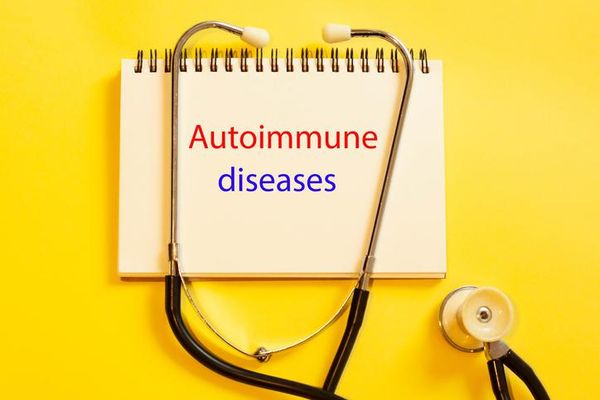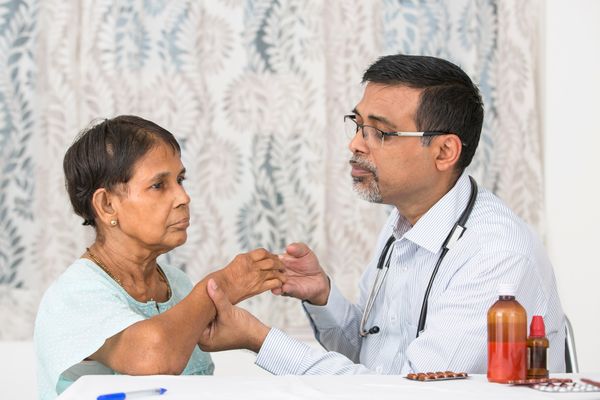By Vicki Baldwin
I'm outdoorsy, but I rarely go hiking anymore. I love live music, but I've had to skip many concerts. I enjoy my job, but I often find myself struggling to stay awake. I enjoy time with friends, but I frequently find myself needing to cancel plans.
I'm not lazy. I'm not an introvert. I'm not a pessimist. I have Sjögren's.
Chances are you've never heard of Sjögren's, and if you have heard of it, you probably don't understand it.
Sjögren's is an autoimmune disease affecting more than 4 million Americans—90 percent of whom are women. Sjögren's causes the body to attack moisture-producing glands—most commonly the eyes and mouth—and presents symptoms of fatigue and joint pain. It can also cause dysfunction of other organs, affect the kidneys, gastrointestinal system, blood vessels, lungs, liver, pancreas and nervous system.
I've been living with a Sjögren's diagnosis for nearly seven years, but I've had it much longer. When I first saw my health care provider about my original symptoms—dry eyes and severe fatigue—they were brushed off. The dry eyes were attributed to Lasik surgery I had, and the fatigue was thought to be thyroid related. After having a thyroidectomy—surgery to remove my entire thyroid gland—my fatigue became worse.
It took four long years to receive my Sjögren's diagnosis.
Once I received my diagnosis, I was relieved, but I also knew life would not go back to being normal—ever. Yes, I received treatment, which helped, but fatigue and pain are a constant. I deal with them daily.
I didn't just watch my life slip away, though. I made adjustments. I live a wonderful life, despite Sjögren's, by:
- Working from home, which allows me to rest as needed.
- Educating people about my disease. I carry pamphlets with me wherever I go. If Sjögren's comes up, I hand them a pamphlet. This includes educating health care professionals, many of whom aren't fully aware of this disease!
- Carefully planning my schedule. If I plan to go to a concert on a Friday, I know I will need the entire weekend to recover and rest.
- Having a therapy dog. Being at home alone can become isolating, so having a companion helps. I also bring my dog to visit people in nursing homes, which gets me out of the house and brings joy to others.
- Joining and creating support groups. I'm not alone, and it helps to know there are other people living with Sjögren's. I've formed very close friendships with several people from Facebook pages that provide support to people living with Sjögren's, and I even created a local support group in my town. You can find more information about support groups at the Sjögren's Syndrome Foundation's website.
The Sjögren's Syndrome Foundation, the only non-profit organization dedicated to increasing research, education and awareness for Sjögren's, is a great resource for anyone battling this disease. With the foundation's help, I pulled together these health facts that pretty much sum up the basics about Sjögren's:
Overview
Sjögren's (SHOW-grins) is a systemic autoimmune disease that affects the entire body. Nine out of 10 people with Sjögren's are women. The average age of diagnosis is late 40s, although it can occur in all age groups.
Sjögren's often is undiagnosed or misdiagnosed because disease symptoms frequently overlap with or "mimic" those of other diseases including lupus, rheumatoid arthritis, fibromyalgia, chronic fatigue syndrome and multiple sclerosis. There is also no single test that will confirm diagnosis.
Sjögren's is serious but generally not fatal if complications are diagnosed and treated early. An estimated 2.5 million people are currently undiagnosed. Reaching a diagnosis can often be difficult and has been found to take an average of three years.
Health care professionals sometimes treat each symptom individually and do not recognize that a systemic disease is present, because all disease symptoms are not always present at the same time and because Sjögren's can involve several body systems.
Currently, there is no cure for Sjögren's, but prescription medicines and over-the-counter treatments may improve various symptoms and prevent complications.
People with Sjögren's must be monitored carefully for development of internal organ involvement, related autoimmune diseases and other serious complications. In particular, the incidence of lymphomas (cancer of the lymph nodes) is significantly higher in people with Sjögren's compared to the general population.
Rheumatologists have primary responsibility for managing Sjögren's. They will conduct a series of tests and ask about symptoms. Depending on your symptoms and complications, you may also be diagnosed and treated by specialists such as ophthalmologists, optometrists, dentists, otolaryngologists and others.
If you think you may have Sjögren's, you should consult a health care professional immediately.
Symptoms
Symptoms vary from person to person but may include:
- a dry, gritty or burning sensation in the eyes
- dry mouth
- difficulty talking, chewing or swallowing
- a sore or cracked tongue
- dry or burning throat
- dry or peeling lips
- a change in taste or smell
- increased dental decay
- joint pain
- vaginal and skin dryness
- digestive problems
- dry nose, throat and lungs
- debilitating fatigue
Risks
Although anyone can develop Sjögren's, it typically occurs in people with one or more known risk factors. These include:
- Age. Sjögren's is usually diagnosed in people older than 40.
- Sex. Women are much more likely to have Sjögren's.
- Rheumatic disease. It's common for people who have Sjögren's to also have a rheumatic disease, such as rheumatoid arthritis or lupus.
Additional Facts to Know
Sjögren's is a life-changing disease. According to a recent Sjögren's Syndrome Foundation survey, 71 percent of those surveyed agreed that their Sjögren's gets in the way of the things they need to do each day.
If you or someone you know has Sjögren's, it's important to be realistic about how it may change aspects of your life, such as:
- Home life: The majority (79%) of people surveyed who have Sjögren's say their disease has led them to make at least one day-to-day change around the house, such as stopping or cutting back on housework (74%) or hiring additional service providers to help with housecleaning or child care (38%).
- Work life: More than half (54%) of those surveyed say their Sjögren's has caused them to make at least one change regarding work, including having to stop working (28%), reduce their schedule of hours (28%) or make a career change or take a less demanding job (27%).
- Social life: Nearly half (49%) of those surveyed said Sjögren's had a great deal or a lot of negative impact on participating in hobbies, social activities and extracurricular activities.
- Emotional well-being: Three-in-four (74%) said living with Sjögren's adds a significant emotional burden to their life.
- Relationships: The majority cited their Sjögren's as having at least some negative impact on relationships with friends and family (63%), sex life (59%), relationships with spouse or partner (55%) or caring for their children (19%).
If you'd like to learn more about Sjögren's, please visit the Sjögren's Syndrome Foundation's website.









